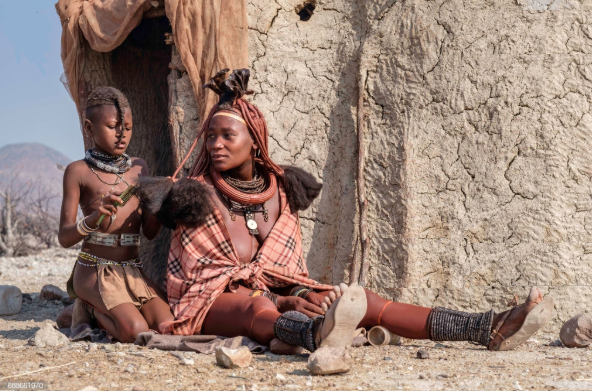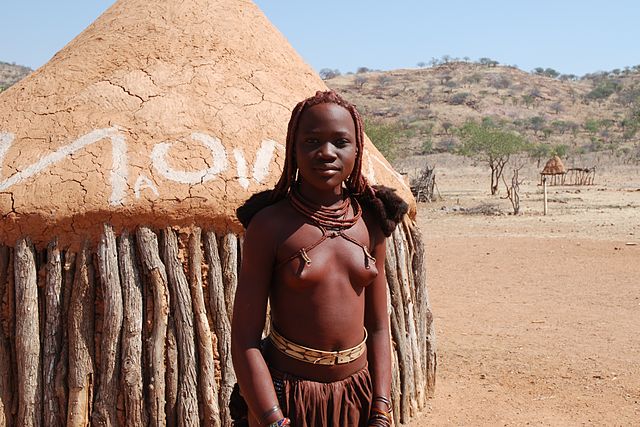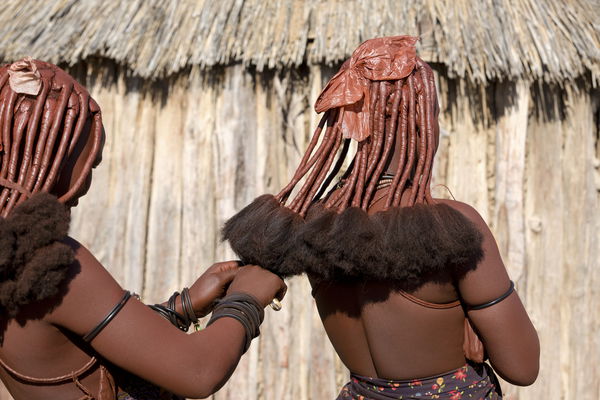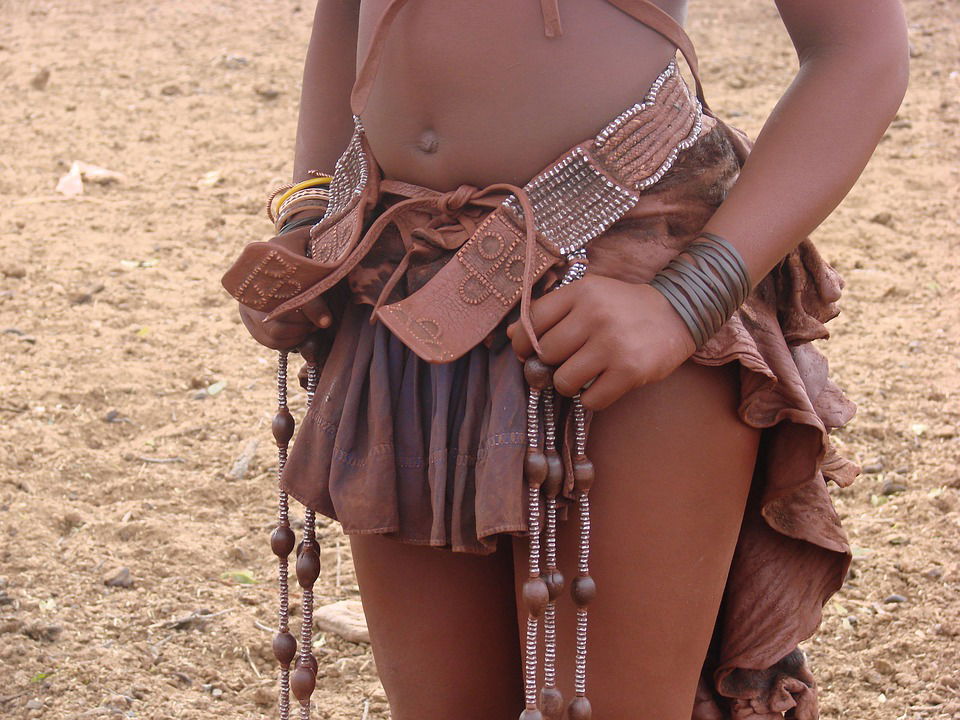Tribes of Namibia

It is estimated that only about 50.000 Himbas are left in Northern Namibia. They are a semi-nomadic tribe famous for covering their bodies with red ochre, this is to protect the skin in the harsh environment they live in
A safari in Namibia is not only about the landscapes and viewing the big five, there is another soul-sitting experience in this country: meeting the indigenous tribes.
There are at least 11 different ethnic groups in Namibia. If you head to the Kalahari, you will get a chance to meet the San Bushmen. In Arid Damaraland and Kaokoland, it will be easier to visit one of the only remaining semi-nomadic tribes in the world, the Himba Communities. If you stop in Windhoek you may come across the Herero wandering in the streets wearing bright colored dresses.
    | Visiting the Himba people Himba is an indigenous tribe that resides in the northern part of Namibia. They are known for the distinctive red ochre coat they use in their bodies and hair, they prepare a red paste made of ochre mixed with butterfat called Otjze, as soon as ladies are old enough they will start applying it to their skin. It really helps as an insect repellent, sun block as well as it helps keeping the skin hydrated, something really important considering the harsh conditions they live in. As water is also very scarce in this region women also use a herb-infused smoke that spreads over their bodies. Both men and women wear traditional clothing made from goat skins suitable for their living environments. Body decoration is especially important for women who wear pieces made of bone, metal, shell or skin and their ankles are considered the most private part so they will always be covered with beautiful anklets. Most of them are livestock farmers who breed the fat-tailed sheep and goat and they count their wealth based on the number of livestock they have. Approximately 50,000 of them live in the northern part of Kunene River in Kaokoland. Himba women perform more tasks than men, including carrying water to the village, collecting firewood, or making clothing and jewelry among others. Milking the cows is also the women’s responsibility as well as taking care of the children. The Himba are polygamous, with an average man being married to two wives at the same time. The community has a tight relationship with tourism and visiting one of their settlements is one of the most enriching cultural interactions you will ever have. Some camps are located close to Himba Communities who are still semi-nomadic and allow visitors to experience traditional Himba culture. You will get to learn how women’s elaborate their intricate hairstyles and jewelry and witness how the Himba use otjze on their skin. Himbas are very welcoming and love interacting with visitors. |





